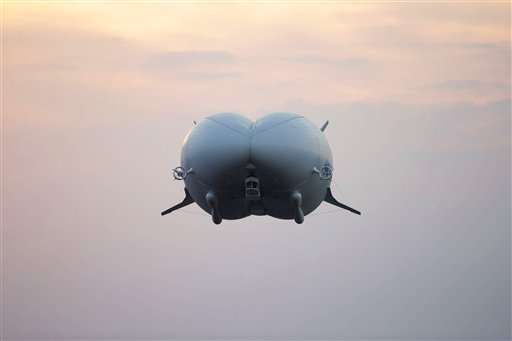
Days after its original launch date was postponed due to a technical hurdle, the world’s largest aircraft, Airlander 10, flew for the first time on August 17 over central England. Nicknamed the “flying bum” due to its slightly suggestive frontal shape, the Airlander 10 was originally modeled for military surveillance of Afghanistan, but has been repurposed after the program was scrapped in 2013.
Airlander developer, Hybrid Air Vehicles, says the 92-meter (302 ft) aircraft can travel at up to 144 kph (90 mph), reach heights of 20,000 feet (6,100 m), and can stay airborne for two weeks straight. It can also carry more load than airplanes—up to ten tonnes (11 tons), while using less fuel.

Unlike earlier airships like the Hindenburg, which crashed and killed 35 in 1937—including officers of the German ministry, Airlander 10 runs on helium which is not flammable like the hydrogen that powered the Hindenburg. It uses this to maintain its lift.
The test flight hopes to introduce the airship for commercial use. The company plans to build even bigger airships that could carry 50 metric tonnes (55 tons) by the 2020s.
“It’s a great British innovation,” said chief executive Stephen McGlennan. “It’s a combination of an aircraft that has parts of normal fixed-wing aircraft, it’s got helicopter, it’s got airship.”
Aviation magazine AIN defense editor Chris Pocock says its commercial viability is still uncertain.
“Airships and hybrids have still got a credibility gap to cover,” he said. “Technically I think they are there now, but economically I’m not so sure.”